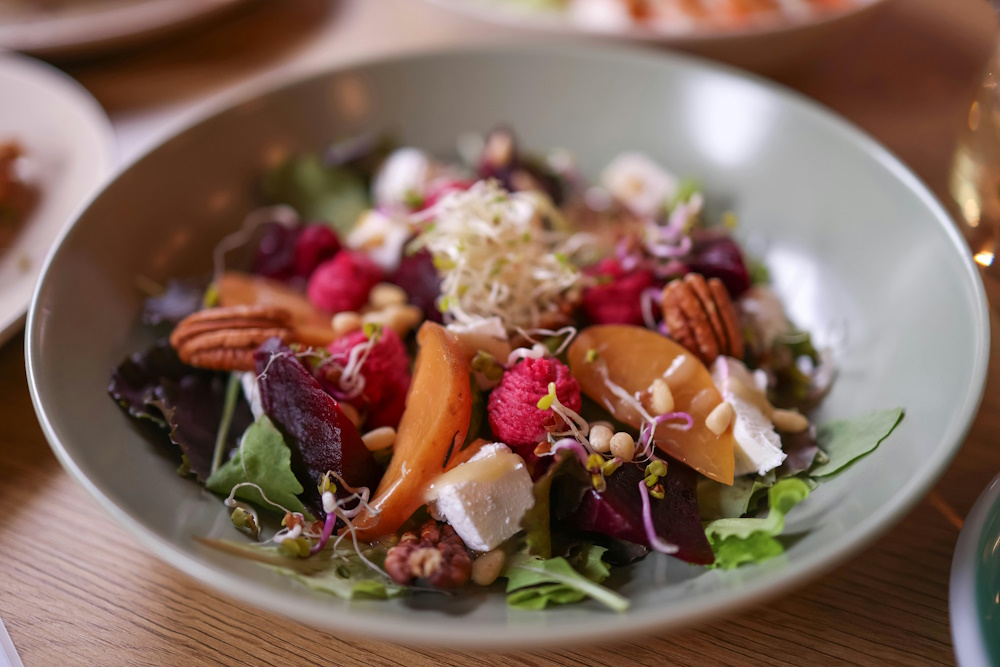Pilates is a renowned form of exercise that focuses on building core strength, flexibility, and overall body awareness. To get the most out of your Pilates practice, it’s essential to pay attention to your nutrition. In this guide, we’ll explore the relationship between Pilates and nutrition, addressing common questions and concerns related to what you should eat when practicing Pilates, how it impacts your health, and whether it’s an effective way to lose weight.
Do you need to eat more when doing Pilates?
Whether you need to eat more while doing Pilates depends on various factors, including your goals, the intensity and duration of your sessions, and your individual metabolism. Here are some considerations to help you determine your nutritional needs while practicing Pilates:
· Energy Requirements: Pilates, particularly the mat-based form, is a low-to-moderate intensity exercise. While it burns calories, you may not require a significant increase in your calorie intake unless you’re combining it with other high-intensity workouts or have specific energy needs.
· Pre-Workout Nutrition: A light snack or meal before a Pilates session can provide the energy needed for a productive workout. Opt for easily digestible carbohydrates and a small amount of protein to fuel your muscles.
· Post-Workout Nutrition: After Pilates, focus on replenishing your body with a balanced meal or snack that includes a combination of carbohydrates, proteins, and healthy fats. This aids in muscle recovery and overall well-being.
· Hydration: Staying hydrated is crucial during any form of exercise, including Pilates. Proper hydration supports your energy levels and helps you perform at your best.
· Individual Needs: Everyone’s nutritional needs differ. If you have specific dietary restrictions, allergies, or underlying health conditions, consult a registered dietitian for personalized guidance.
What a Pilates instructor eats in a day?
Pilates instructors often prioritize a balanced and nutritious diet to support their active lifestyle. Here’s a glimpse of what a Pilates instructor might eat in a day:
· Breakfast: A Pilates instructor may start the day with a balanced breakfast, such as oatmeal with fresh fruits and nuts or a vegetable omelet. This provides a combination of complex carbohydrates, protein, and healthy fats to fuel their morning.
· Snacks: Throughout the day, instructors may have small, nutritious snacks like Greek yogurt with berries, a handful of almonds, or a piece of fruit. These snacks help maintain energy levels and prevent overeating during meals.
· Lunch: Lunch could consist of a salad with lean protein (chicken, tofu, or beans) and plenty of vegetables. This meal provides essential nutrients and supports muscle recovery.
· Dinner: A Pilates instructor’s dinner might include a balanced plate of lean protein (fish or chicken), whole grains (quinoa or brown rice), and steamed or roasted vegetables. This combination offers a variety of nutrients and supports recovery after a day of teaching and practicing Pilates.
· Hydration: Staying well-hydrated is crucial, so water is a constant companion throughout the day.
Instructors tend to prioritize whole, nutrient-dense foods and maintain a balanced diet that suits their energy requirements and preferences.
Is Pilates a good way to lose weight?
Pilates can be a valuable component of a weight loss journey, but it’s not a standalone solution for significant weight loss. Here’s how Pilates contributes to weight management:
· Calorie Burn: Pilates burns calories, and regular practice can help create a calorie deficit, which is necessary for weight loss. However, the calorie expenditure during Pilates may be lower than that of high-intensity exercises like running or HIIT.
· Muscle Toning: Pilates builds lean muscle, which can boost your metabolism over time. An increased metabolism helps burn more calories, even at rest.
· Body Awareness: Pilates encourages mindfulness and body awareness, which can lead to healthier eating habits and improved portion control.
· Stress Reduction: Pilates promotes relaxation and reduces stress, which can be beneficial for those who eat in response to stress or emotional triggers.
· Complementing a Balanced Diet: To maximize weight loss with Pilates, it’s essential to complement your exercise routine with a balanced diet that supports your goals.
In summary, Pilates is a valuable tool in a weight loss journey, but it’s most effective when combined with a balanced diet and other forms of exercise. It contributes to calorie burn, muscle toning, and improved body awareness, all of which support a healthy weight.
Does Pilates make you healthier?
Absolutely, Pilates is a holistic form of exercise that contributes to overall health and well-being in several ways:
· Improved Core Strength: Pilates strengthens the core muscles, which support the spine and contribute to better posture and reduced back pain.
· Enhanced Flexibility: Pilates incorporates stretching movements that improve flexibility and joint mobility.
· Better Posture: The emphasis on body awareness and alignment in Pilates promotes good posture, reducing the risk of musculoskeletal issues.
· Stress Reduction: The mind-body connection in Pilates fosters relaxation and stress reduction, which is essential for overall health.
· Enhanced Body Awareness: Pilates promotes awareness of movement patterns and body mechanics, leading to healthier choices and habits.
· Balanced Muscle Development: Pilates encourages balanced muscle development, which is vital for preventing injuries and improving overall physical function.
· Injury Prevention: By strengthening muscles and improving alignment, Pilates can help prevent injuries and alleviate chronic pain.
Incorporating Pilates into your fitness routine can significantly contribute to your overall health and well-being.
In conclusion, Pilates and nutrition are intertwined aspects of a healthy lifestyle. Paying attention to your nutrition, whether it’s balancing your pre- and post-workout meals, staying hydrated, or making mindful food choices, can enhance the benefits of your Pilates practice. While Pilates alone is not a magic solution for weight loss, it does play a valuable role in achieving and maintaining a healthy weight. Furthermore, Pilates offers a range of health benefits, including improved core strength, flexibility, posture, stress reduction, and injury prevention. When combined with a well-rounded diet, Pilates can be a powerful tool for achieving overall health and well-being.
